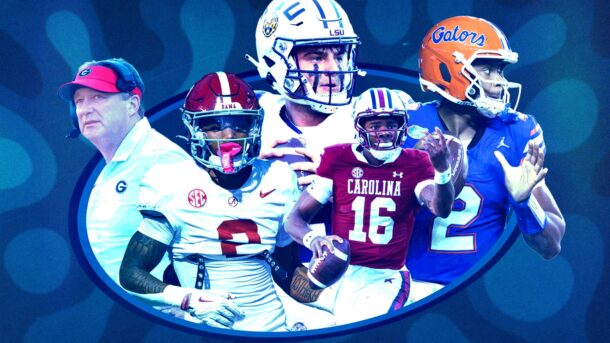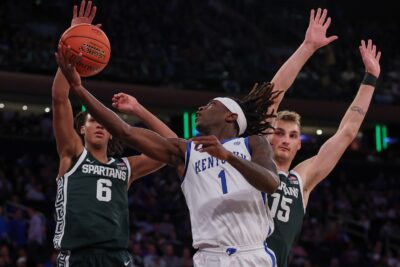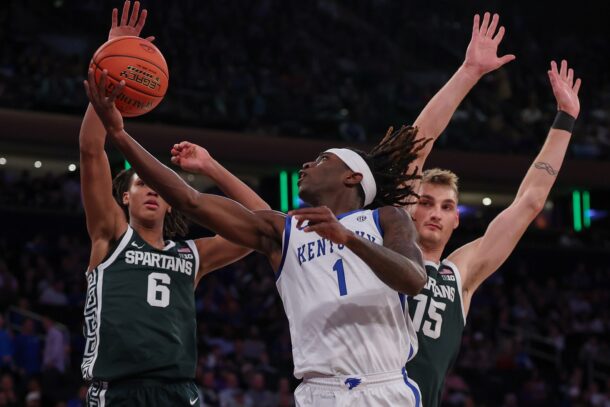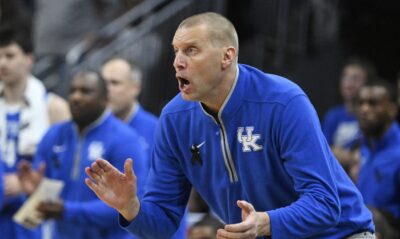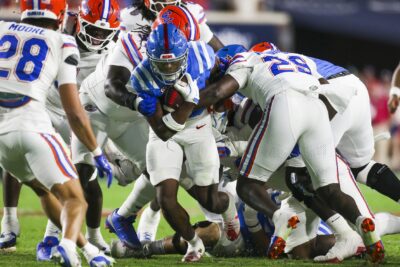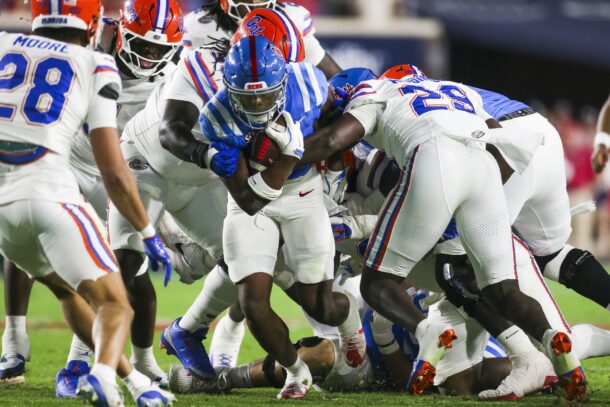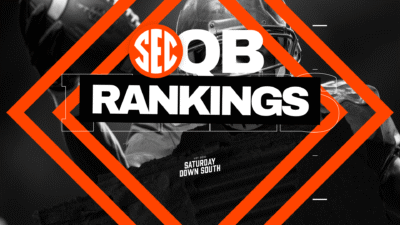
It seems unfathomable, but it’s not.
Glancing at returning primary ballcarriers at each program, it’s possible the SEC could boast double-digit 1,000-yard rushers next season, 10 to be exact, which would exceed the previous high of nine set back in 2012.
Last season, four Power 5 conferences flexed at least five 1,000-yard rushers, but none more than seven. Running backs have been deemed expendable at the NFL level, but that’s not affecting offenses in college football, especially not in the SEC in 2015.
RELATED: Chubb, Fournette have buzz, but beware of Henry
Looking at the candidates and reasons why 1,000 yards for each is manageable, the feat seems realistic:
Nick Chubb, Georgia: The SEC’s best back is every defense’s top target this fall, but it won’t matter as long as the sensational sophomore stays healthy. He’s the reason Georgia is a preseason SEC Eastern Division favorite intent on getting back to Atlanta for the first time in three seasons. Chubb surpassed the 1,500-yard barrier last season despite not inheriting a starting role until Week 7. He’ll likely lead the SEC in rushing this fall and be named the league’s offensive player of the year if Brian Schottenheimer’s offense goes as planned between the hedges.
Alex Collins, Arkansas and Jonathan Williams, Arkansas: You won’t find a better backfield 1-2 punch in college football than what Bret Bielema has in his arsenal at Arkansas. Williams’ decision to return for his senior season means the Razorbacks are a legitimate SEC West threat after making tremendous strides down the stretch in 2014. The pair’s workload was extremely balanced last fall and we can expect more of the same from an improved attack.
Leonard Fournette, LSU: This guy has a Heisman trophy to win as one of several elite sophomores across the nation. Fournette exploded for 289 yards over his final two starts as a true freshman and enters spring practice as LSU’s best player overall. He only tallied 20 or more carries in three games last fall. Expect him to triple that number, and as a result maximize his production, this season.
Derrick Henry, Alabama: In what could very well be Henry’s final campaign in Tuscaloosa, the linebacker-sized ballcarrier no longer has T.J. Yeldon in front of him. Henry rushed for 990 yards last season despite finishing 14th in the SEC in total carries (172). With a career yards-per-attempt average of 6.5, he’s destined to dominate as a junior.
Jalen Hurd, Tennessee: Lost in translation thanks to Joshua Dobbs’ impressive second-half showing along with national freshman of the year competitors Fournette and Chubb, Hurd was fantastic for the Vols as a highly-touted true freshman with 899 yards and five touchdowns. He was one of the league’s leaders in yards after contact — despite arguably the SEC’s worst offensive line — and showed a workhorse-like approach. With a year under his belt, 1,000 yards won’t be a surprise.
Russell Hansbrough, Mizzou: With lightning rod Marcus Murphy gone, Hansbrough’s numbers could skyrocket as a top option in Mizzou’s Maty Mauk-led offense this season — that’s assuming the Tigers stick to the run. We’re not arguing with the two-time defending division champs’ mindset, but too often it appeared Mizzou got away from power football last fall. Hansbrough is just 92 yards shy from reaching 2,000 career as one of the league’s most underrated backs.
Jovon Robinson, Auburn: This first-year JUCO transfer is the wild-card, assuming he becomes the Tigers’ featured back this season. Gus Malzahn has literally ran his No. 1s into the ground over the last two years as Tre Mason and Cameron Artis-Payne combined for an SEC-high 620 carries. Quarterback Jeremy Johnson provides this attack with a healthy mix as a threat through the air which could eliminate some of the pressure off Robinson, Peyton Barber and Roc Thomas. Nonetheless, Robinson will get a hard look in Auburn’s uptempo scheme and may carry a sizable load if the recent trend on the Plains continues.
Dak Prescott, Mississippi State: The Bulldogs have a run-first offense and will have to share the burden of potentially matching Josh Robinson’s 1,200-yard explosion between multiple guys. Prescott carried it 210 times as a junior and missed the millennium mark by 14 yards, a high number for any quarterback. To remain nationally-relevant as the SEC’s lead Heisman option, he’ll be asked to do even more in his final season in Starkville.
Ralph Webb, Vanderbilt: Webb is the 10th possibility if ex-Wisconsin offensive coordinator Andy Ludwig centers his game plan around the redshirt sophomore. Webb is coming off one of the best seasons in program history for a running back, rushing for 912 yards on 212 carries. With the quarterback position still a major issue in Nashville, Webb’s workload should be substantial this season.
